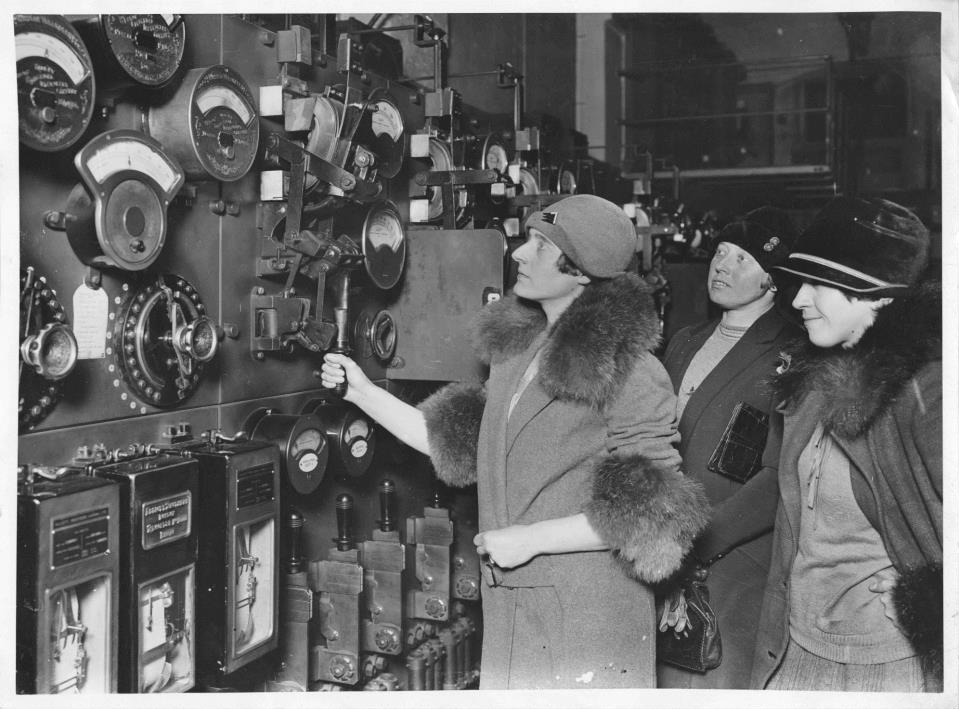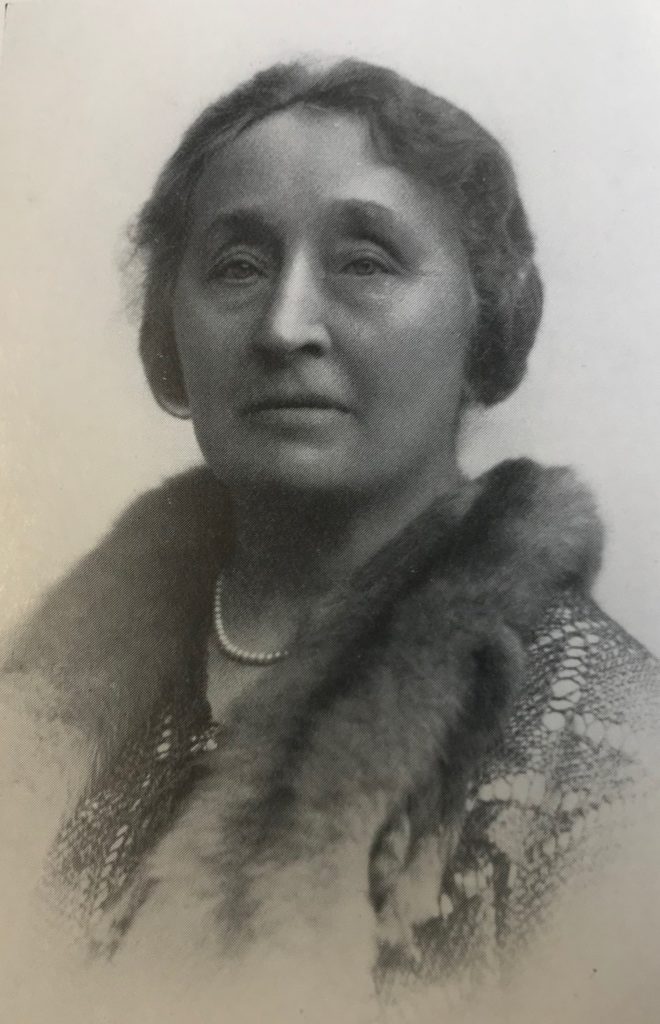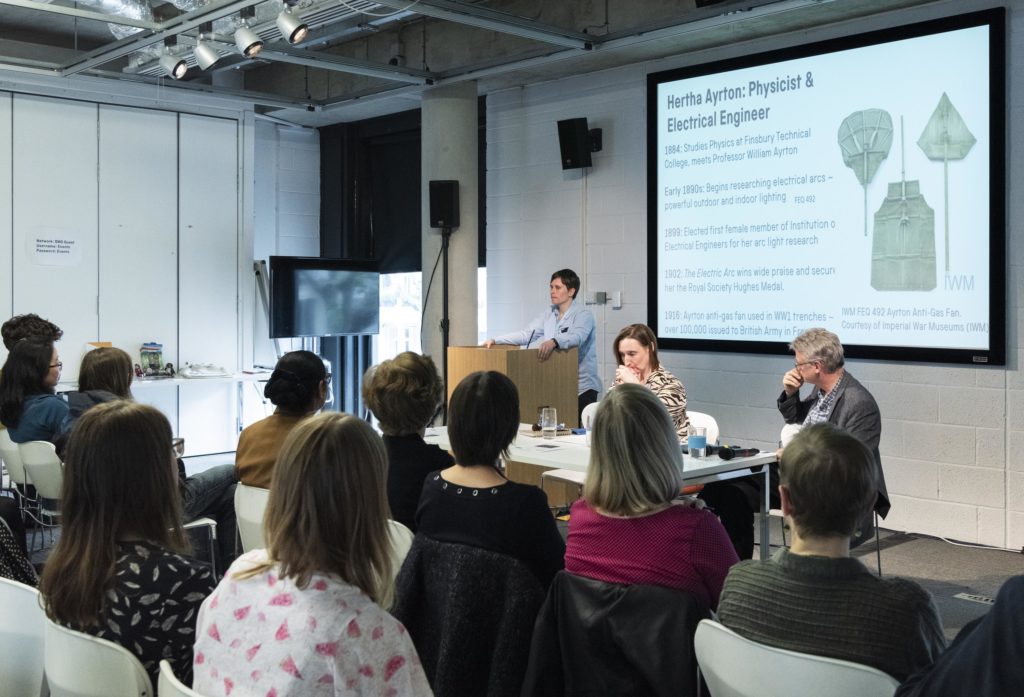by Emily Rees

On the 23rd June 1919, seven eminent and wealthy women in Britain did something extraordinary and unprecedented; they founded the Women’s Engineering Society (WES), the first society of its kind in the world.
One hundred years later, in its centenary year, having been sustained by various talented and persevering women, WES continues to promote and support women engineers. Yet, despite Britain’s pioneering history of women engineers, today only 12% of engineers in Britain are women, the lowest proportion in Europe.
This is one of several reasons why WES and the AHRC Electrifying Women project are working together to promote the historical role that women have played in engineering, feeding into WES’s aim to celebrate past, present and future women engineers. With a renewed historical understanding of women’s very long past role in engineering, we hope to normalise the idea of women in engineering.
Hertha Ayrton is one of the relatively more well-known examples, in part due to the fact she was, in 1899, the first woman to be elected a member of the Institution of Electrical Engineers. Many more women remain unknown. Part of the problem with uncovering women in engineering is that their history has been erased or very well hidden.
One reason for this is that women’s role in engineering, especially before World War One (1914-1918) was familial, either through the parental family or marriage. Alice Gordon, for example, played a pivotal role in the domestication of electricity in the 1880s, alongside her husband.
She published books on the subject, including Decorative Electricity (1891), and wrote of her ‘personal experiences’ as an engineers’ wife, showing her expertise about the engineering processes.
Katharine Parsons, one of the founding members of WES, similarly became engaged in engineering through her husband, Sir Charles Parsons. Their daughter Rachel Parsons went onto study Mechanical Sciences at Girton College, Cambridge.
Women’s role in engineering, therefore, was often collaborative rather than individual, and it is through examining collegiate ways of working that we can find the role played by various contributors, rather than just focusing on a lone (male) ‘genius’.

Crucially, the stories of women like Alice Gordon and Katharine Parsons tell us that women have a history that pre-dates the founding of WES in 1919. Women were active in engineering in the late Victorian era, normally through a family connection. Often these women had links with the suffrage movement, a connection that can bear further research.
However, it is likely that this history extends further back than this; a census from 1841 lists over 100 women working in engineering roles of some kind, an aspect of women’s history in engineering that also needs further investigation.
The founding of WES in 1919 was, however, no coincidence. World War One provided unparalleled opportunities for women to work in roles normally populated almost exclusively by men, such as engineering.
Once the war ended, women at first had reason to be optimistic: the 1919 Sex Disqualification (Removal) Act allowed women to join professions for the first time. However, the 1919 Restoration of Pre-War Practices Act forced women to leave their jobs to give way to the men returning from war. As a result of this, one of WES’s founding aims was to ensure that women’s newfound role in engineering was not lost.
Between World War One and World War Two, there are innumerable stories of the work of women in engineering, supporting each other, collaborating internationally, and contributing to inventions that have shaped the modern world. This is a story that needs to be told to destroy the myth that women do not have a place in engineering, because they have had a rich, varied – though often disguised – role within it.

The project team at Electrifying Women – Dr Emily Rees (University of Leeds), Dr Elizabeth Bruton (Science Museum) and Professor Graeme Gooday (University of Leeds) – want to disseminate the story of women engineers to as wide an audience as possible, as well as continuing to research the many endeavours of women engineers.
For this, we are seeking to collaborate as much as possible. This blog is a space for us to share our research, but we also welcome guest blogs, so if you have any ideas about this or any other aspect of the project please contact us at electrifyingwomen [at] gmail.com.
Further reading:
Bruton, Elizabeth (2018). “The life and material culture of Hertha Ayrton”. Science Museum Group Journal. 10 (10).
Gooday, Graeme (2008). Domesticating Electricity: Technology, Uncertainty, and Gender, 1880-1914, London: Pickering & Chatto.
Gordon, Alice (1891) Decorative Electricity, London: Sampson Low, Marston, Searle, & Rivington.